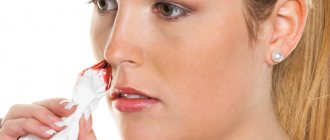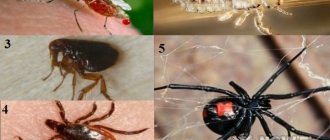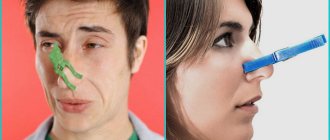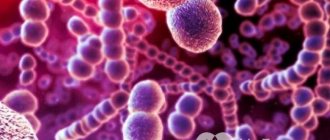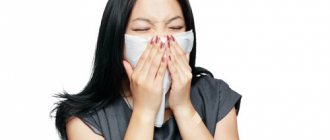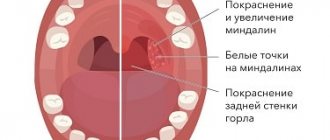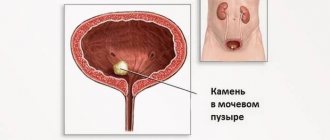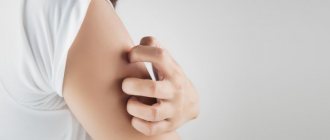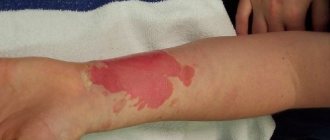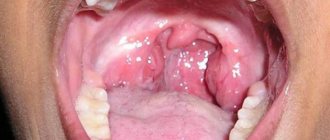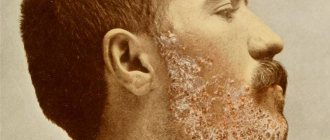Selecting a device
Many sick patients prefer to use the recommendations of traditional medicine and rinse their nose at home using special objects - a large syringe with the needle removed; medical pear; nasal syringes; teapots of special design. What can be used is determined by the patient himself, how convenient this or that device will be for him.
Pears, mugs, teapots - today there is plenty to choose from. The main thing is to adapt and rinse your nose correctly. And today even a smart child can be taught this. But it’s better not to get sick.
With proper and regular rinsing of the nose, you can achieve important results:
- eliminate the formation of swelling;
- free the nasopharynx from pathological accumulations;
- wash away purulent accumulations.
After this, the general condition of the person significantly improves, and proper oxygen saturation of the internal organs occurs. Therefore, the question does not arise whether it is possible to rinse the nose with sinusitis. It’s not just possible, but absolutely necessary in order to free up the respiratory passages and give the whole body fresh air, which is what rinsing requires in case of serious inflammation of the nose.
ethnoscience
Traditional medicine methods are used in the treatment of many diseases. It contains recipes for solutions that effectively cope with sinusitis. Most often, for respiratory diseases, doctors recommend using chamomile decoction. But there are other folk remedies:
- A decoction of propolis cleanses the sinuses well. It is prepared like this: pour a glass of water into a container, add 1 tsp. table salt, boil, and then add 12 drops of propolis tincture. The procedure must be carried out with fresh solution.
- Often grandmothers dry currant leaves to drink aromatic tea in winter. But blackcurrant decoction can also be used to rinse the nose. A small bunch of leaves is poured with 300 ml of boiling water, allowed to cool and the procedure is carried out.
- A decoction of chamomile and coltsfoot helps relieve inflammation in the sinuses. To prepare the solution, you will need to take 1 part of chamomile flowers and two of coltsfoot flowers, pour 300 ml of just boiled water. After cooling, you can use it to rinse your nose.
- A solution based on celandine is effective in treating sinusitis. To prepare it, you will need to dilute 1 tsp in hot water (300 ml). salt and celandine juice.
Sinusitis can be effectively cured using complex therapy. In addition to rinsing, you should add anti-inflammatory drugs, nasal drops and other remedies recommended by your doctor. Bacterial sinusitis can only be treated with antibiotics; home washes for this form are ineffective and dangerous. At the first symptoms, you should seek qualified help. This is the best prevention of complications.
When to rinse your nose
Rinsing the maxillary sinuses is used as one of the main means of treating diseases in chronic or acute form, which ENT doctors today include:
- severe colds;
- sinusitis in all its manifestations;
- rhinosinusitis at different stages of the disease;
- hay fever;
- habitual drying of the mucous membrane.
One of the main indications for nasal rinsing is also the rehabilitation stage after operations on the nose and nasopharynx.
Sinusitis is clearly visible on a simple x-ray. The doctor sees the picture of the disease and prescribes either home washes or more drastic treatments.
There are no contraindications for rinsing the nose for sinusitis. Doctors recommend carefully looking at the composition of medicinal solutions so that there is no allergy to any of the components of the medicinal composition.
At the same time, the benefits that home rinses bring are noted:
- washing out purulent mucus;
- washing out a mass of microbes;
- relieving internal swelling of the mucous membranes.
Cleaning products
Saline solution
The easiest to prepare and has the best effect is saline solution. You can use a pharmacy form, or you can prepare it yourself.
- Saline solution is sold in pharmacies in bottles of 100, 200 and 400 ml, available without a prescription. It washes out pathogens well, thins thickened mucus, softens and separates crusts.
- Sea salt can be ready-made (Aquamaris, Aqualor and others) or prepared by dissolving a spoonful of sea salt in a glass of water. Perfectly relieves inflammation.
For children from 0 there are ready-made products: Otrivin Baby, from 6 months Aqualor and others. You can use a regular isotonic solution.
Used as a means of preventing influenza and acute respiratory infections.
Furacilin
Furacilin is suitable for washing the maxillary sinuses during purulent processes. Helps reduce swelling, has an anti-inflammatory effect and blocks the proliferation of bacteria at the site of infection. Prepared immediately before use, 0.5 tablets should be dissolved in a glass of water and washed in a convenient way. Furacilin is also used to rinse the nose of children.
Dolphin
The solution contains substances of plant origin and minerals. Available with a drainage device for flushing the nasal sinuses. Used in the treatment of nasal diseases. It has high activity against inflammatory processes; before use, you should read the instructions and consult a doctor; there are a number of contraindications.
ethnoscience
Traditional medicine is available to everyone and has a variety of properties that allow them to be used in the treatment of severe processes as an auxiliary therapy or as a basis in the initial stages of the disease and for prevention.
Herbal infusions
Prepare before use. A glass of boiled water requires a tablespoon of dry crushed raw materials. Preparation is simple: pour boiling water, leave for 20-30 minutes, cool, strain and use as intended.
You can use herbs individually or combine them in a variety of ratios. Suitable for treating inflammatory processes:
- pharmaceutical camomile,
- calendula flowers,
- sage,
- eucalyptus,
- plantain,
- currant,
- mint.
Aloe and Kalanchoe juice
You can use aloe juice diluted with water, pure or with the addition of honey. When choosing Kalanchoe, the solvent is sunflower or olive oil, preheated in a water bath. Has contraindications, do not use for children under 12 years of age. It has a strong anti-inflammatory effect, but can cause irritation of the mucous membrane. If negative manifestations appear, stop using it.
Nasal rinsing is the simplest medical procedure, during which you can achieve a quick recovery without the use of serious medications and complications of the inflammatory process.
Medicines: what to use at home
Each medication will have a positive effect on the condition of the disease, but the effectiveness of rinsing depends on the complexity of the disease, the characteristics of the course of the disease, and drug tolerance. The ability of the immune system to fight infections is important.
There is always a medicine for a medicinal solution in your home medicine cabinet. These are the simplest remedies that are used in folk medicine: salt, soda, iodine, common herbs - chamomile, string, St. John's wort. Pharmacy chains offer complex drugs that include several ingredients. Salt products are common, they vary depending on the manufacturer, but have practically the same composition and purpose. When rinsing the nose with salt for sinusitis with complex medications, patients and doctors should carefully look at the composition so that none of the ingredients causes an allergy.
What medications are used for nasal rinsing at home?
As you can see, these are familiar drugs, known for their widespread use and effective effect on the disease.
The simplest and most inexpensive drugs are furatsilin and iodine. They have an active antiparasitic and antimicrobial effect; they are used in small quantities to prepare the solution, which makes the use of the medicine very economical.
But even with such economical use, doctors warn: do not make the solution stronger than indicated in the recipe, so as not to burn the mucous membrane, after which it begins to crack.
In this regard, rinsing the nose with furatsilin for sinusitis seems to be the safest, but effective due to the antimicrobial properties of the main active ingredient. Rinsing with furatsilin is recommended during the preoperative period to free the nose from germs and pathogenic flora.
The most popular today are saline pharmaceutical solutions: “Dolphin”, “Aqua Maris”, “Aqualor”. They are produced on the basis of salt and its derivatives; the composition uses purified homogenized salt, which does not leave sediment, and is ideal for doing nasal rinsing with sea salt for sinusitis yourself, at home.
Clearing your sinuses with home remedies
Take a steamy shower for 10 minutes.
This is one of the simplest and most effective sinus cleansers. After your shower, drink a cup of hot tea, preferably herbal, to temporarily ease your breathing and reduce headaches.
Increase your fluid intake.
This will help thin the mucus in your sinuses and prevent further dehydration. Moreover, fluid consumption includes not only water and juices, but also broth, as well as soups based on it.
Rest.
If you don't get enough sleep or work long hours, your body will take longer to get rid of the infection. If possible, provide yourself with a “fasting day.”
Cleansing the sinuses can also be done using spicy or spicy foods. No, this doesn't mean you have to put peppercorns in your nose.
To make mucus flow better from your sinuses, use this recipe:
- Mix 2 teaspoons organic apple cider vinegar and a pinch of cayenne pepper powder.
- Dissolve in a quarter glass of hot water.
- Drink this mixture warm 2 times a day (evening and morning).
Other spicy foods that can help relieve nasal congestion include horseradish, onions, and black pepper.
Additional Ingredients
As additional ingredients, salt compositions include plant components that have antimicrobial properties. Rinsing the nose with saline solution for sinusitis at home is carried out by those patients who have learned how to rinse their nose well. Often the solution is prepared simply using boiled water from table or sea salt that is always available at home. You need to let it settle well and carefully strain through a cotton-gauze napkin. Having prepared it, you can wash your nose with a saline solution of your own making.
Rinsing your nose with salt water for sinusitis is considered an effective method, but doctors warn: do not increase the dosage, and wash as many times as prescribed by the doctor.
How to rinse the nose with sinusitis at home is up to the patient to decide if he is proficient in the rinsing technique. The doctor advises after examining the patient what is the best way to rinse the nose for sinusitis.
How to rinse correctly
Against the background of complications and purulent forms of the disease, rinsing when diagnosing sinusitis must be carried out in a hospital setting. Cleansing of the maxillary sinuses is carried out using medicinal compounds and special devices.
If you independently rinse the nasal cavity against the background of sinusitis, it is important to adhere to a number of certain rules:
Before the procedure, it is important to reduce tissue swelling. To do this, the mucous membranes are irrigated with anti-inflammatory, vasoconstrictor drugs. The best option is to use a special syringe. If one is not available, you can use a large syringe. Next, you need to slightly tilt the body forward, and then gradually insert the nozzle of a syringe or syringe into each of the nostrils
The liquid should be carefully introduced into the nasal cavity. If all the rules are followed, the solution will flow out in a uniform stream from the other nostril or oral cavity. It is recommended to heat the required liquid to a comfortable temperature
It is not recommended to use excessively hot or cold solution.
Rinsing against the background of sinusitis is required to be carried out at least four times throughout the day. In the form of a solution, you can use decoctions, infusions of beneficial plants, sea water, which has a softening effect, and medications prescribed by a doctor.
You need to wash your nose correctly
The purpose of rinsing is to free the nasal passages from infectious contents and restore normal breathing. However, rinsing alone will not get rid of sinusitis. Sinus rinsing is included in the treatment package as prescribed by the doctor. He teaches how to properly rinse the nose for sinusitis, and prescribes how often this should be done to achieve the desired treatment effect.
To wash the nasal passages, either special teapots or simple child-sized medical bulbs are used. It is important to tilt the head correctly so that the liquid being poured flows out correctly through the second nasal passage. With some structural features of the nasopharynx or a close gag reflex, it is allowed for the liquid to flow partially through the mouth.
First of all, you need to carefully free the nose from deposits of pathological contents. Drops prescribed by a doctor are used here because each body reacts to medications differently. Most often these are Tizin, Naphthyzin, Rinazolin, which temporarily constrict blood vessels, relieve swelling and free up the nose. 5 minutes after the nasal passages are freed, rinsing can be done.
That's right - if the medicinal solution poured into one nasal passage, washing the nasopharynx, pours out through the other nostril, or partially through the mouth. The head should be tilted to one side so that one nostril is higher. Medicine is poured into it. The procedure should be carried out 2-3 times a day, for a couple of weeks, until the condition improves.
Here are detailed instructions on how to properly rinse your nose at home:
To rinse the nose for sinusitis, a specific medicine is selected. This is either a specially prepared herbal decoction, or medicines dissolved in water. For one wash you need no more than a glass of medicinal solution.
However, there are nuances that should be taken into account when rinsing the nose for sinusitis at home.
It is very important here that water does not penetrate the Eustachian tubes, which can lead to complications with the ears.
Therefore, rinsing the sinuses during sinusitis should be done correctly; you need to know how to rinse your nose at home, and do it correctly.
How often can you rinse your nose for sinusitis?
Irene Nitzsche
If correct, then as much as you like.
How it became difficult to breathe through your nose - you can do it. Treatment of sinusitis1. Dry heat on the sinuses FOR NO MORE THAN ONE DAY. You can take a small bag (if you don’t have a bag, you can use a clean baby sock), heat the coarse salt in a dry frying pan. Place the bag of salt on the bridge of the nose and warm it. If you don't want to bother with the bag, you can warm your nose and sinuses with boiled eggs while they are warm. You can use a compress from a bag of rice, cereal, salt, or a hard-boiled egg wrapped in a scarf. You need to keep this compress as long as the heat continues. IF THE PAIN INCREASES – STOP 2. Take a position in which there is less pain3. Sinupret or Sinuforte, 1 tablet 3 times (this is herbal)4. Be sure to take nasal drops like Nazivin or similar 3 times a day at equal intervals until nasal breathing becomes free. If you have sinusitis, you can’t do without it. Alternate with point 55. Buy camphor oil 30 ml at the pharmacy, add 10 drops of propolis tincture (also at the pharmacy), drip into the nose 3 times a day, 2-3 drops, lubricate the brow ridges, maxillary sinuses - even old ones will go away sinusitis.6. Take a piece of thick linen fabric, cut it in the shape of a printed letter “T” according to the size of the nose and eyebrow area. 1 tbsp. Heat a spoonful of honey and apply it to the cut fabric. Make a compress. Cellophane on top, scarf and to bed. 10 procedures (for some people 5 is enough) and sinusitis is gone.7. Rinse your nose with salt water. To do this, dissolve half a teaspoon of salt in a glass of warm water. Rinse with a rubber bulb, leaning over the sink so that the liquid flowing from the nose flows there. Having collected the solution, insert the tip of the syringe into the nostril and, squeezing the balloon, direct the stream towards the nasopharynx along the lower wall of the nasal cavity. The other half of the nose is also washed. It is not recommended to direct the stream upward, as there is a sensitive olfactory zone there. Hold your breath while rinsing. After the procedure, it is advisable to breathe calmly for a minute or two so that the viscous mucus has time to dissolve, “get wet”, and then you can blow your nose. Don’t be afraid, it won’t get into the windpipe - it will flow out either into the usual swallowing throat (pharynx), or into the other nostril, or pour out from the same one. You can buy a rubber bulb at a pharmacy. Sucking water from your palm, that is, with a stream of air, is unsafe: it can get into the maxillary and other paranasal sinuses and cause inflammation.7. Kapala-Bhati pranayama. This is from yoga - cleansing the sinuses with breathing. Method 1. Sit up straight, like a pharaoh statue, and inhale and exhale quickly from both nostrils, as if blowing out a flame. Method 2. Inhale quickly through the left nostril and exhale slowly through the right. Then, inhale quickly through the right and exhale slowly through the left. Repeat this process over and over again. Do 50 times, taking one inhalation and exhalation cycle at a time. For example, inhaling through the left nostril and exhaling through the right add up once. If the pain does not decrease within 1-2 days, you need an antibiotic. If it intensifies, you need it immediately.
Anna Protova
I washed my nose several times a day. Washing alone is not enough in any case. Cinnabsin helped me get rid of this sore more.
Method used in hospitals
Irrigation in a hospital is considered a more effective procedure than home irrigation. The doctor uses a special device that delivers medicinal solutions into the maxillary sinuses. Thus, mucous and purulent masses are cleaned out, reducing the number of pathogenic bacteria.
The procedure is as follows:
- The patient's nose is treated with vasoconstrictor drugs, as it may be slightly painful.
- Next, an aspirator is inserted into the nostril, through which the medicinal solution is poured. Liquid comes out of the maxillary passages, irrigating the mucous membrane and carrying pus with it.
Reference. The procedure is called "cuckoo" - the name comes from the fact that the patient has to say "cuckoo". This is necessary to raise the palatal curtain so that the medicine does not enter the pharynx.
